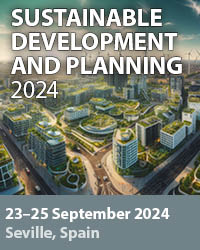Urban And Regional Typologies In Relation To Self-sufficiency Aiming Strategies
Price
Free (open access)
Transaction
Volume
84
Pages
11
Published
2005
Size
348 kb
Paper DOI
10.2495/SPD051082
Copyright
WIT Press
Author(s)
A. van Timmeren, L. C. Röling & E. D. Tawil2
Abstract
In The Netherlands the building rate is relatively high, while at the same time little space is available. Existing cities expand ‘oil slick like’, transforming into complex urban networks consisting of different conurbations. The shortage of space leads to a rising demand for multiple use of ground and the intensification, or ‘densification’, of existing city districts and neighbourhoods. This process of densification can be considered positive for urban areas with lower densities, for it can generate more urban quality and can improve the environmental efficiency of the public works. However, existing city-parts, invisible infrastructures and social structures are being aggravated due to this intensification. Apart from that less (semi) public open spaces remain within these compact cities in the making. This is also due to cut backs on maintenance costs and disposal of existing dispersed and fragmented parts of ‘lost’ mono-functional (mostly green) areas. In summary one can say that the ecological and spatial conditions of open areas in and around cities are under pressure: distances grow, protection and qualities diminish, and (infra)structures get more complex and less visible. There is however a possibility to revalue the liveability and ecological quality of the cities, and these diminishing (semi) public (green) areas in and around cities: investing in the integration of joint or individual solutions concerning the essential streams to provide with the fundamental needs of the direct surrounding buildings. The use of decentralised systems at a local scale could introduce new urban functions to mono-functional and diminishing (green) areas. This paper will focus on the effects on (regional) planning in relation to the introduction of such interconnections of essential urban infrastructures with (green) urban areas and actual sustainable urban concepts. Keywords: city form, urban typology, decentralisation, integration strategy.
Keywords
city form, urban typology, decentralisation, integration strategy.




